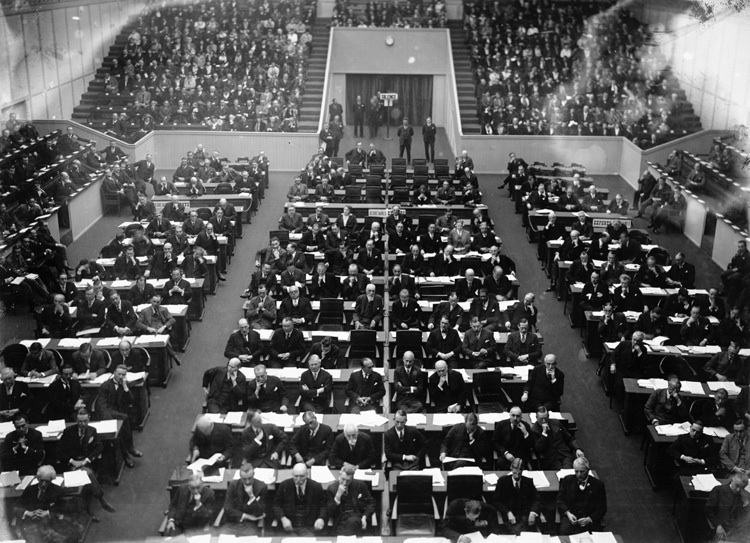You are using an out of date browser. It may not display this or other websites correctly.
You should upgrade or use an alternative browser.
You should upgrade or use an alternative browser.
Glen
Moderator
In the 1916 Presidential Election, the vote swung back to the East Coast and the Federalist party, electing New York Governor Remy Aupaumut as president. President Aupaumut was the scion of a prominent New York family who traced their ancestry back to Revolutionary War hero (of Mohican extraction) Hendrick Aupaumut.

Is that Khan?
KKKKKKKKKKKHHHHHHHHHHHAAAAAAAAAAAANNNNNNNNNN!!!!!!!!!!!!!

No its just Ricardo Montalban. You can tell by the Corinthian leather..
Naw, it's Remy Aupaumut, can't you read?
Glen
Moderator
After the urbanity of the Federalist President Aupaumut, in 1924 the electorate swung once again to a Democrat, this time from the great state of Michigan, and elected business mogul George Washington Vining, who also claimed descent from a veteran of the Revolutionary War, Elisha Vining.


Glen, it would be amazing of you could position TTLs political partiess and possibly other ideologies on one of these charts
https://theboxpop.files.wordpress.com/2010/08/political-spectrum.jpg
https://theboxpop.files.wordpress.com/2010/08/political-spectrum.jpg
Oooh! Awesome. Thanks Glen.After the urbanity of the Federalist President Aupaumut, in 1924 the electorate swung once again to a Democrat, this time from the great state of Michigan, and elected business mogul George Washington Vining, who also claimed descent from a veteran of the Revolutionary War, Elisha Vining.
Glen
Moderator
The sesquicentennial celebrations in America in the year 1926 involved several retrospective reviews of how the United States of America had developed over the intervening 150 years. Among these was popularization of the Political Graph, showing the state of the major political parties of the US in relation to several other well known political movements.

Political Graph circa 1926
Glen
Moderator
Glen, it would be amazing of you could position TTLs political partiess and possibly other ideologies on one of these charts
https://theboxpop.files.wordpress.com/2010/08/political-spectrum.jpg
You're the best, glen.
I aim to please, SuperFrog...
Glen
Moderator
From the chart it looks like all the main parties in the DSA are fairly conservative?
That's from their perspective...and I would note that conservative here should not be construed as having the same policies as conservative in the US.
On this political compass, the terms mean what they say and say what them mean.
So the spectrum on the horizontal axis would be:
Radical (aka revolutionary)
Progressive (seeks added innovation)
Moderate (sees value in some changes, but also in keeping some things)
Conservative (seeks to keep things the same)
Reactionary (seeks to change back to earlier things)
Now the thing to remember here is that overall, compared to OTL, this world has traditionally valued more classical liberalism/humanism.
On the vertical axis:
Centralized (big unitary government, interventionist, big business)
Federalist (strong federation, moderate business)
Moderate (values some bigger governance but also strong local autonomy)
Confederationist (loose unity, more local autonomy)
Decentralized (small government, local rule, small business)
Last edited:
Glen
Moderator
Thanks for the explanation!
no problem - OTL politics would seem very odd to DSA denizens....
Glen
Moderator
The Imperial British government was split in terms of their response to the Subcontinental Crisis. The more aggressive elements of the Conservative Party wanted full military intervention to bring the break-away India back into the Imperial fold. The progressive wing of the Liberal Party advocated allowing India the freedom to plot her own course. The scene on the subcontinent was tense, to say the least, and parliament saw many fights on the floor over the crisis. Eventually the British government struck out for a middle ground, demanding that the Sultan government enter into negotiations rather than just declaring a fait accompli, especially when it came to the great deal of British material in the country. The British began a waiting game with the Indians, refusing to relinquish British military outposts on the subcontinent, and launching an embargo against the Indians until they would come to the bargaining table.
However, the Sultan government would not be swayed so easily. They started their own quiet sieges around British strongholds, and obtained the pledge of several Malthusian governments in Europe and elsewhere to trade with the breakaway UNI state.
The governments who had embraced the Malthusian cause did more than just agree to trade with India, however. At the international congress of Malthusians, they declared their own trade sanctions against the British Empire until they respected their fellow Malthusians at the UNI.
However, the Sultan government would not be swayed so easily. They started their own quiet sieges around British strongholds, and obtained the pledge of several Malthusian governments in Europe and elsewhere to trade with the breakaway UNI state.
The governments who had embraced the Malthusian cause did more than just agree to trade with India, however. At the international congress of Malthusians, they declared their own trade sanctions against the British Empire until they respected their fellow Malthusians at the UNI.
The Malthusian International Community Declares Sanctions Against the British Empire


Glen
Moderator
Good update. Though I might need a refresher here, by looking at that chart, Malthusians are communists? Which countries are Malthusian?
You need to not think of OTL left and right, they are irrelevant in this timeline.
Malthusians are....Malthusians. They are radical big government idealists who believe in saving the world from human overpopulation.
Glen
Moderator
Can I get a quick recap please. What exactly is happening in India? Thanks.
India became a Dominion in the 1920s, and Prime Minister Sultan's Malthusian coalition has, after years of butting heads with the British government, broken away entirely from the British Empire. The British responded by launching an economic embargo and refusing to relinquish control of military outposts (primarily naval ones - the army ones were held by Indian dominion troops and went over predominantly to the Indian government), which the Indians have surrounded. In response, the rest of the Malthusian led nations of the world have leveed sanctions against the British Empire.
Share: